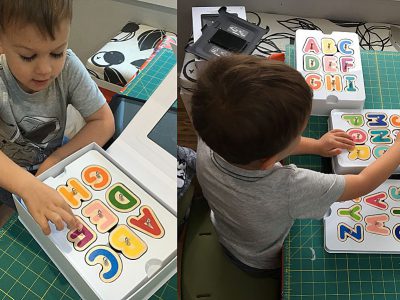Posted on, www.educatoronline.com.au, 19 Jan 2017
With Science, Technology, Engineering and Mathematics (STEM) education taking on greater importance as schools, governments and industries seek to prepare children for the future workforce, are we focusing on the right skills?
Infosys Australia chief, Andrew Groth, told The Educator that amid the push by schools, industries and state and federal leaders to boost STEM education, a “major component” is sorely lacking – education in Artificial Intelligence.
“There has been a massive drop-off over the last decade in the number of students going on to study computer science at university. The most important demographic to target in this respect are our 11, 12 and 13 year-olds,” he said.
“There is a big focus on STEM education, which is the responsibility of schools, government and businesses, but AI is a major component of this. It’s a skill that is in demand, so there needs a stronger focus towards it.”
He added that while there are some universities teaching AI skills, there needs to be greater participation of young people in this type education as it is a growing industry that most large businesses are investing in.
Groth’s comments follow a survey of 1,600 business leaders from across Australia the USA, UK, France, Germany, China and India, which found that despite this investment, Australia ranks last when it comes to its young people accessing the skills needed to deploy AI technologies.
“At the forum, we looked at the view held by young people towards schools and education, and found that while Australian youth were the most aware globally of the digital revolution and its nature, they were the least prepared in terms of skills.”
“That shows a real dilemma in Australia. While there are a lot of programs to help turn this around, we have a very significant gap, and this was illustrated in the survey that’s just been released.”
Digital skills gap ‘across the board’
Groth said that the skills gap is not only limited to AI but across the entire spectrum of digital technologies in general.
“I think there is an issue with STEM education across the board, and particularly in Australia. However, we’re seeing this same lack of skills in ICT. This problem has to be addressed by all of us, because it’s an issue that exists across the board,” he said.
“Partly, this is reflective of a very strong interest in digital technology and how to use it, but when it comes to how we build it, design it and be a part of the results, that’s where we are falling short.”
In June last year, the Committee for Economic Development of Australia (CEDA) released a report, titled: Australia’s Future Workforce which revealed that nearly 40{fa76ff8d89001c4e403402728e1a7786cd25c7bdb58a18ff0a8051c7751c2729} of Australian jobs will be automated in 10-15 years.
Since the release of this, and other similar, reports, there have been concerns that many jobs – particularly in the field of manufacturing – may not require humans.
But Groth says there is a solution.
“The more that Australian businesses engage with AI, the more they will see that this technology is a platform to enhance workers, not replace them,” he said.
He said Infosys has a developed a “maturity level matrix” that looks at the deployment of AI, which the organisation segmented by countries and industries.
“Globally, manufacturing is in the middle of that level. There is certainly a clear role for AI in manufacturing, but it’s about amplifying human potential,” he explained.
“The advantage of AI is to automate the more mundane and repetitive tasks, freeing up the human potential on the creative side. Looking ahead, there are huge benefits in the manufacturing sector.”
Groth said that business leaders recognise the changing nature of employment.
He said that with employees focusing on more creative strategic work, this is leading to business leaders demanding a range of creative skills.
What business leaders want from employees
58{fa76ff8d89001c4e403402728e1a7786cd25c7bdb58a18ff0a8051c7751c2729} are demanding active learning skills
53{fa76ff8d89001c4e403402728e1a7786cd25c7bdb58a18ff0a8051c7751c2729} are demanding complex problem-solving skills
46{fa76ff8d89001c4e403402728e1a7786cd25c7bdb58a18ff0a8051c7751c2729} are demanding critical thinking skills
46{fa76ff8d89001c4e403402728e1a7786cd25c7bdb58a18ff0a8051c7751c2729} are demanding creativity
43{fa76ff8d89001c4e403402728e1a7786cd25c7bdb58a18ff0a8051c7751c2729} are demanding logical reasoning skills
“These skills highlight the growing need for employees who can learn quickly, think on their feet and overcome problems efficiently in order to succeed in an AI-driven environment,” Groth said.












































